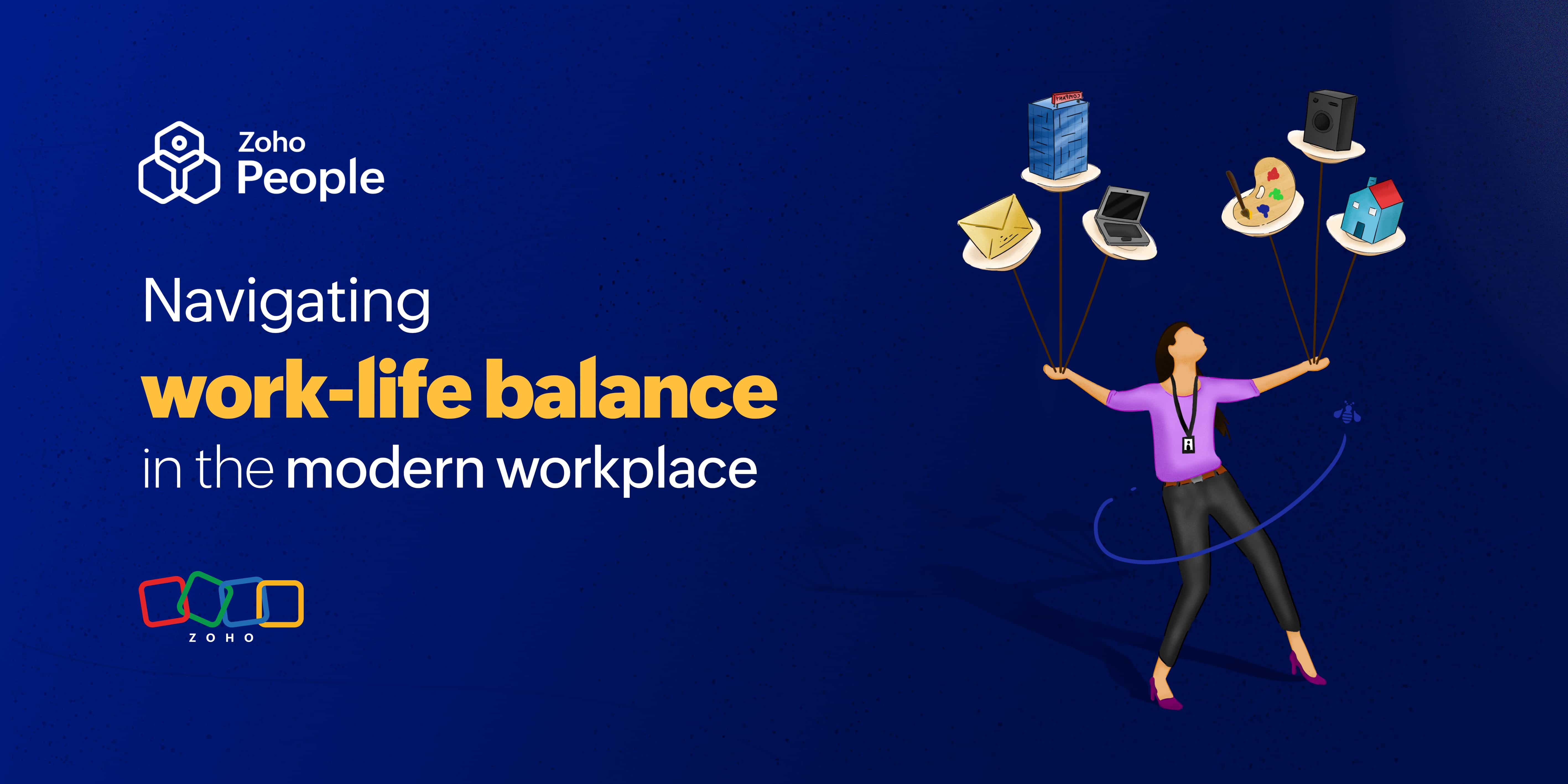- HOME
- Performance and Culture
- Work-life balance in the modern workplace: Challenges and solutions
Work-life balance in the modern workplace: Challenges and solutions
- Last Updated : March 28, 2025
- 1.1K Views
- 4 Min Read

According to a recent Randstad report, which surveyed over 26,000 workers in 35 countries across Europe, Asia Pacific, and the Americas, work-life balance has surpassed salary as one of the key motivators for employees—a first in the report's 22-year history. The same report found that employees are quitting their jobs when their expectations are not met.
This shift highlights that it's high time for organizations to give up on rigid working schedules and build a culture that prioritizes flexibility and work-life balance. Helping employees strike a better work-life balance is the key to improving their mental and physical health, as it helps them beat stress, anxiety, and burnout. It also plays a significant role in raising their productivity, satisfaction, and happiness.

Let's take a quick look at some of the key challenges associated with supporting work-life balance, along with the tips and tricks to overcome them.
Challenge #1: The always-on culture
The rise of flexible work schedules like remote work, hybrid work, and work-life integration has fostered an always-on culture that expects employees to be online and reply to every ping around the clock. Concrete working hours and their boundaries have blurred in many cases, making it difficult for employees to disconnect from their work. This culture can cause severe burnout and exhaustion, ultimately affecting their productivity.
Solution: Managers sending emails and working after hours can inadvertently make employees believe that the same is expected from them. Educate managers about the downsides of the always-on culture, and explain that they should avoid contacting employees outside of their working hours unless it's absolutely necessary. Encourage them to set an example by establishing well-defined boundaries and taking appropriate breaks without guilt. Decide on appropriate times for group collaboration and implement quiet hours so team members can work without interruption. Make it clear that employees have the right to disconnect. You can also consider implementing tech tools that enable employees to schedule their messages, send automated responses, and turn on Do Not Disturb mode.
Challenge #2: Unrealistic work demands
Some organizations impose unrealistic work demands and expectations in the name of improving productivity. Managers may set tight deadlines or even expect their team to complete many tasks within a short timeframe. In some cases, they expect their team members to reply to messages and complete certain tasks while on leave. Fearing the consequences of speaking out and being seen as incapable, employees may keep quiet and comply. This creates undue pressure on employees and makes it hard for them to strike a healthy work-life balance.
Solution: Encourage managers to clarify the scope of each task and set deadlines based on the actual required effort. Have them establish clear expectations for employees so that there are no guessing games, and remind them to distribute work equally among all team members. Build an open culture where employees feel safe discussing the challenges they face. Advise managers to listen without judgment and address valid concerns with suitable resolutions.
Challenge #3: Sticking to rigid and traditional management strategies
Traditional management strategies can significantly hinder work-life balance, as they don't align well with the needs of the modern workforce. The traditional 9–5 schedule can make it difficult for employees to strike a good work-life balance, primarily because they're expected to be physically present at work throughout the day. They may also feel obligated to work overtime to prove that they're productive. As a result, the idea of setting clear work boundaries and taking breaks can cause employees to fear judgment from managers and colleagues.
Solution: Organizations and their HR teams should move forward with modern management strategies that focus on flexibility, output, and trust. Encourage managers to focus on the output and quality of each task, rather than on the time employees spend doing them. Instead of a rigid 9–5 schedule, consider establishing a flexible schedule where employees work based on when they're most productive. If possible, allow employees to work from anywhere that they are comfortable with.
Challenge #4: Industry-specific barriers
Industries with highly demanding work cultures—like healthcare, hospitality, food services, manufacturing, and construction—often struggle to support scheduling flexibility because of the associated work demands. The long and demanding hours can create pressure and undue stress on employees, affecting their work-life balance.
Solution: Job sharing is one of the most effective ways to help employees in these industries strike a better work-life balance. Splitting one full-time role between two employees can help them take appropriate breaks and time off by swapping shifts. Additionally, organizations belonging to these industries can explore compressed work weeks, where employees work in shifts.
Challenge #5: Lack of proper resources and tech tools
Without the necessary resources and tech tools, employees can experience unnecessary pressure that affects their work-life balance. The administrative burden associated with manual work and inefficient tools may force employees to put in longer working hours. Employees may spend a lot of their time on repetitive tasks, taking their time away from meaningful work. Lack of proper support at work can also affect their mental health.
Solution: We're in an era where the workforce is made up of employees who grew up using technology. It's only right for organizations to implement AI-driven tech tools that make work easier. Conduct upskilling programs regularly to equip employees with the right skills to carry out their responsibilities. Run regular audits to identify inefficient processes that hinder productivity and enhance them with more efficient tools.
Wrapping up
Work-life balance improves mental health, enhances productivity, and reduces stress, leading to employees who are well-rested, focused, and efficient. While there are challenges associated with achieving this balance, there are also effective methods to overcome them!
 Tarika
TarikaContent Specialist at Zoho People


